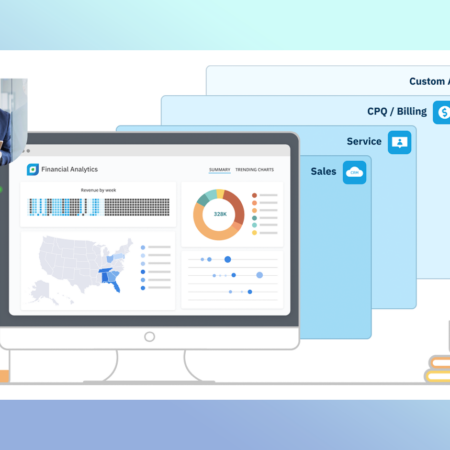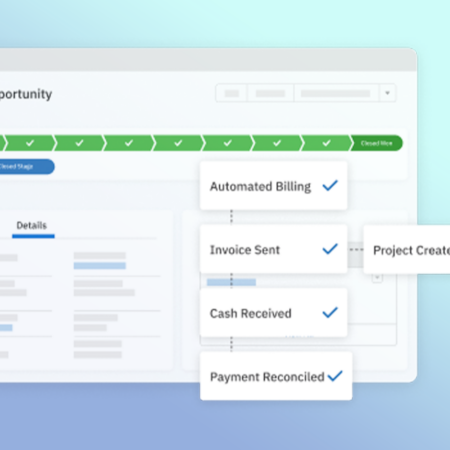
Finance touches every part of a business. The way it’s managed shapes everything from supplier relationships to growth plans. Still, many companies rely on spreadsheets, emails, and disconnected apps to handle core accounting tasks. Accounting automation—or the use of software to manage and optimize finance tasks like invoicing, reconciliations, and reporting—frees staff to focus on more valuable work and provides leaders with faster, more accurate insight into the health of their business.
“That could mean more time spent on growth and seizing growth opportunities for your company,” says Shannon Canzanella, Manager at Accounting Seed, as part of an expert panel on The State of Accounting Automation. “It could mean more time looking forward, being forward thinking instead of always playing catch up.”
Finance teams are spending a staggering 14 to 23 hours per week managing AR and AP processes alone, and that adds up to nearly 12 business days a month. This massive time investment in manual tasks reflects a broader challenge: 41% of CFOs say that less than a quarter of their finance processes are currently automated, indicating that even though the technology is there to enable accounting automation, adoption has a long way to go.
Let’s take a closer look at which pieces of the financial close can be automated and the far-reaching benefits of a solution that takes your accounting function from slow and disjointed to a well-oiled machine.
Key accounting processes that you can automate
Accounting automation refers to automating specific workflows that eat up time, carry a high risk of error, or delay decision-making within the financial function of an organization. Four of the most common—and most impactful—areas to implement accounting automation include:
Accounts Receivable (AR)
Cash flow depends on timely billing and collection, but manual invoicing and traditional payment methods (such as paper checks) significantly slow down the process. A survey of CFOs found that 77% of AR teams say they’re behind, with 22% admitting they are months behind. AR automation helps you get paid faster by automating invoice creation and delivery and reconciling transactions without manual intervention.
“Staff who are overworked are often playing catch up,” says John Benza, Director of ISV Partnerships at Accounting Seed and two-time Accounting Seed customer, in our recent webinar. “So there’s a backlog inherently in that process. They tend to lose track of payments resulting in inaccurate records. Sometimes double payments are occurring, which can be confusing, or missed or late payments have occurred.”
Many solutions also provide embedded payment links for ACH or credit card payments so that it’s easier for customers to make payments. According to one study, businesses with high levels of automation can receive payments 23 days faster compared to businesses with little to no automation.
Accounts Payable (AP)
Managing vendor bills by hand creates delays, errors, and missed opportunities for early payment discounts, yet 67% of finance teams manually key in invoices while 58% spend more than 10 hours a week processing invoices and administering supplier payments.
AP automation captures incoming invoices, extracts key data, matches them against purchase orders, routes them through approvals, and executes payments electronically. The result is faster invoice turnaround, lower processing costs, and tighter control over cash outflows. Digital payables platforms can help businesses achieve 81% lower processing costs and 73% faster processing cycle times.
Bank reconciliation
Matching transactions against accounting records is one of the most repetitive and error-prone accounting tasks. Automated reconciliation tools import daily bank and credit card activity, clear transactions automatically when they align with existing records, and flag only the exceptions for human review. What once took hours of line-by-line comparisons can now be handled in minutes, freeing finance staff for higher-value work.
Reporting and dashboards
Business leaders need financial data they can act on, not reports that arrive weeks late. Once set up, automated reporting tools pull in real-time data and refresh dashboards continuously. Executives see up-to-date metrics on revenue, expenses, and cash flow without relying on manual exports or spreadsheet workarounds. This is critical at a time when 55% of CFOs say they lack visibility into basic business strategy, limiting their ability to provide strategic guidance, and 98% say they are bogged down by low-value tasks like manual data collection and reporting.
Benefits of accounting automation
For many teams, the idea of overhauling these core accounting processes to enable automation can feel daunting. But the tradeoff is clear—when these tasks are automated, a business can expect to see positive impacts across the board. Here’s how companies stand to benefit.
1. Time savings and efficiency gains
AP automation can reduce the time spent paying bills by up to 70%-80%, while AR automation can cut time spent on collections by as much as 80%. Across the board, finance teams adopting automation often trim their month-end close cycle in half and spend 75% less time invoicing—freeing capacity to focus on financial planning and business strategy.
For example, Avado, a global learning and development provider, used Accounting Seed to automate its core accounting processes. The finance team saved at least 40 hours during month-end close and accelerated its overall accounting life cycle by 75%. CRMIT, a Salesforce consulting firm, saw similar gains after implementing automation. The company improved financial efficiency by 30%, shortened its month-end close by two full weeks, and saved an average of 250 hours per month.
2. Fewer errors and greater accuracy
Reducing human error is a major selling point for accounting automation. Nearly 59% of accountants admit to making multiple errors each month under heavy workloads, and research shows 94% of business spreadsheets contain errors. By removing manual data entry and calculation, automation virtually eliminates common mistakes like typos, transposed numbers, or formula errors. Studies have found that end-to-end financial process automation can cut errors by 90% or more. Another recent survey of accountants revealed that after adopting automation, 98% reported improved accuracy in their work.
3. Cost savings and ROI
Though adopting new software has a cost, the ROI of accounting automation is typically very high. Time saved is money saved; fewer labor hours spent on repetitive tasks can either reduce payroll costs or allow the same team to handle more work without hiring extra staff. By one estimate, companies usually recoup their investment in automation within 6 to 12 months.
4. Improved cash flow
Automation directly strengthens cash flow by accelerating receivables and tightening payables. On the AR side, sending invoices promptly and following up with automated reminders keeps cash moving. This is critical when 43% of companies report too many late or delinquent payments and when 55% of U.S. B2B invoiced sales are overdue. Nearly half of businesses struggle to reduce Days Sales Outstanding (DSO), which slows forecasting and growth. Automating AR helps close that gap by reducing collection times and improving on-time payments.
On the Accounts Payable side, late payments drive unnecessary fees while missed opportunities for early-payment discounts leave money on the table. With automation, bills are routed, approved, and paid on schedule—reducing manual workloads and avoiding errors. Studies show that AP automation can cut the time spent paying bills by 70%-80%, while giving leaders clearer visibility into spend. For a finance team, that means shifting from simply processing invoices to actively managing working capital.
5. Real-time insights for better decision making
With traditional methods, many businesses operate on stale financial data which hampers decision-making. This is reflected in how 49% of executives worry about the reliability of their cash flow information and 98% believe they could have better cash flow visibility.
“Cash flow is fundamentally the lifeblood of an organization and the effective and efficient management of the cash flow in an organization is what enables and empowers leadership’s decision-making process,” says Benza. “So when it’s bogged down… then our accounting and finance teams are not enabling the leadership effectively to manage the cash flow.”
Accounting automation provides real-time or near-real-time financial information, because transactions are recorded and processed continuously. Dashboards in modern systems can show up-to-the-minute metrics on revenue, expenses, cash balance, and key performance indicators.
6. Greater scalability and flexibility
A key long-term benefit of automation is scalability. Automated systems can absorb rising transaction volumes or added complexity without requiring more staff. If your business grows from handling 100 invoices a month to 1,000, automation can manage the increase without asking your team to work nights and weekends. This flexibility allows finance to support business expansion and seasonal surges more effectively.
7. Happier teams and higher-value work
Automation not only benefits the business but also the people doing the work. According to 95% of accountants, success today requires both strong technical accounting skills and the ability to adapt to new technologies. Accountants often welcome relief from tedious tasks; it allows them to engage in more meaningful and rewarding work such as financial analysis, advising management, or refining strategy. By automating the mundane parts of accounting, companies can improve job satisfaction and retain talent, since staff can focus on problem-solving and learning new skills instead of being stuck in data-entry mode.
“It’s actually exciting,” says Benza. “It’s almost liberating that we’re freeing people to use the years of experience they had in accounting beyond the manual entries of data. It is exciting to unleash that intellectual capacity on the business process and how to do business differently.”
What to look for in an accounting automation solution
Your accounting software should scale with you. As your business grows, transaction volumes rise, reporting becomes more complex, and data quality becomes more critical. A strong accounting automation solution keeps your financial data centralized, connected across every department, and ready to support the new wave of AI tools.
Here are three areas to focus on when evaluating solutions:
1. Embedded, not bolt-on
Automation is most powerful when it’s part of your core system—not added on top.
- Bolt-on tools sit outside your accounting platform. They require extra maintenance and still leave gaps that slow down financial visibility.
- Embedded automation keeps everything—billing, payments, reconciliations, and reporting—inside the same system. That means no toggling between apps and no delays in getting accurate numbers. For finance leaders, it also means fewer points of risk and a smoother path to scale.
Benza explains the advantage of embedded solutions: “Accounting Seed lives on Salesforce CRM and the embedded payment solutions are built-in so that you have one ecosystem where all of that functionality can occur. And as a result of that, you don’t have to have multiple platforms, multiple applications or toolsets to manage.”
2. Unified platform over third-party integrations
Automation is only as strong as the data beneath it. When sales, operations, and finance run on separate systems—Salesforce for CRM and QuickBooks or NetSuite for accounting, for example—companies often rely on third-party integrations to connect them. While this may enable some level of automation, it introduces new risks: sync delays, broken connections, and inaccurate or inconsistent data.
Carly Crossland, accounting expert and Product Manager at Accounting Seed, identifies this challenge: “Oftentimes we see that a business’s CRM data lives completely separately from their accounting data, right? There are two separate systems and it creates a real hurdle to adopting automation.”
A solution built on a unified data model eliminates those risks by keeping all business and financial data in one platform. With Accounting Seed, built natively on Salesforce, sales, finance, and operational records live in the same system—no integrations required. That means automation works in real time, with fewer errors and far less manual intervention.
With a unified model like Accounting Seed, you gain:
- Cleaner, more reliable records: One set of data for customers, transactions, and projects—eliminating duplicate entries and rekeying errors.
- Streamlined AP and AR workflows: Automated billing, collections, and reconciliations happen directly inside Salesforce, without waiting on syncs.
- Real-time visibility: Financial data updates instantly across teams, ensuring dashboards and reports are always accurate.
- Confident decision-making: Executives and finance teams can act on accurate numbers instead of second-guessing lagging or mismatched reports.
- Built-in scalability: As transaction volumes grow, the system scales seamlessly without additional connectors or tools to maintain.
Research shows that 94% of enterprise professionals prefer unified platforms over juggling disconnected tools. Accounting Seed provides exactly that—a centralized data model that makes automation faster, more accurate, and more scalable.
- AI-ready foundation
Automation today takes care of structured, repetitive work. The next leap is intelligent automation, where AI can analyze data, flag anomalies, generate forecasts, and even draft management reports in plain language. By 2026, analysts predict most large companies will have AI-driven finance systems providing real-time decision support.
But AI is only as strong as the data it learns from. Poor or inconsistent data gets amplified; clean, unified data unlocks real decision support.
This is why businesses can’t treat AI adoption and data cleanup as separate initiatives. A recent study found that while 60% of organizations now see AI as a top use case for their data, only 12% believe their data is accurate and accessible enough for AI to work effectively. If sales and finance teams categorize customers differently—or if revenue is tracked one way in operations and another in accounting—AI tools will simply replicate those inconsistencies, faster and at scale.
A solution like Accounting Seed, built natively on Salesforce, eliminates these obstacles. By keeping financial, customer, and operational data in the same system, it ensures AI has a reliable foundation to build on. That foundation allows organizations to:
- Run real-time dashboards and forecasts powered by consistent, trusted data.
- Surface proactive insights through built-in AI assistance, helping teams act before issues escalate.
- Break down departmental walls, giving every team—from sales to finance—access to the same accurate information.
- Prepare for advanced AI capabilities like anomaly detection, predictive cash flow analysis, and automated narrative reporting.
Automate your accounting to set the stage for growth
Accounting automation pays off in many ways. It cuts hours of manual work each week, improves the accuracy of financial data, speeds up collections and payments, and supports your business as it grows.
“The cost of labor continues to increase and skilled accounting labor is already becoming more challenging to find and expensive to manage,” adds Crossland. “Businesses end up paying for a larger staff of well educated finance professionals to simply enter data and chase down records, which obviously we all know really is not the best use of their time or their skill.”
The groundwork you lay now also shapes what comes next. Many companies try to connect separate systems with integrations, but those links can break, lag, or create mismatched data. A unified platform avoids those problems by keeping sales, operations, and finance in one place—giving you reliable, connected data that makes automation and AI truly effective rather than frustrating.
The benefits are broad and lasting. The right solution strengthens everything from cash flow to reporting accuracy, while giving your team better tools to do their best work and leadership the confidence to guide the company forward.
Every business is at a different stage with automation. Wherever you are, we can help you take the next step. Connect with Accounting Seed to see how you can streamline your financial operations on Salesforce or watch our on-demand Expert Panel: The State of Accounting Automation to learn more.
See Accounting Seed in action
Get a close-up view of how accounting on Salesforce can eliminate the need for costly integrations—and silos of mismatched information—by sharing the same database as your CRM.



